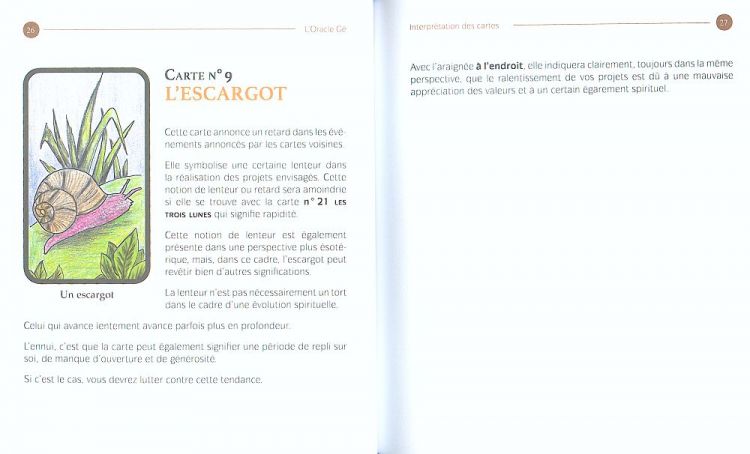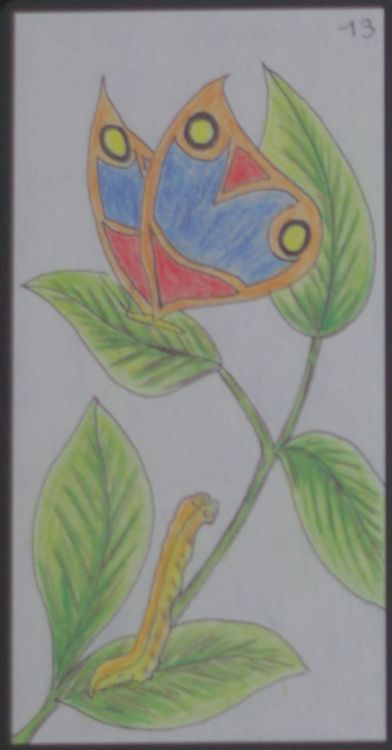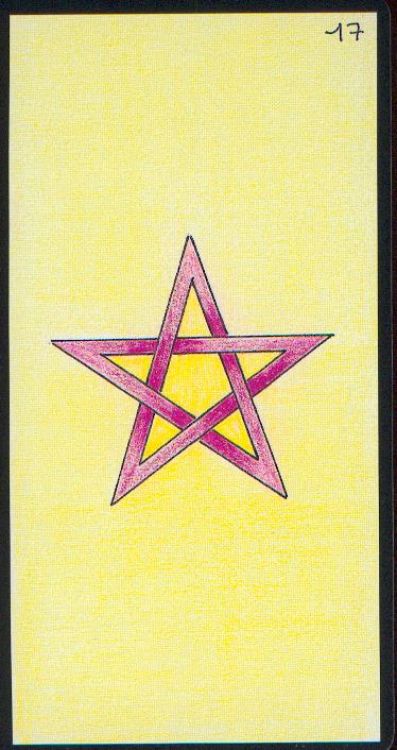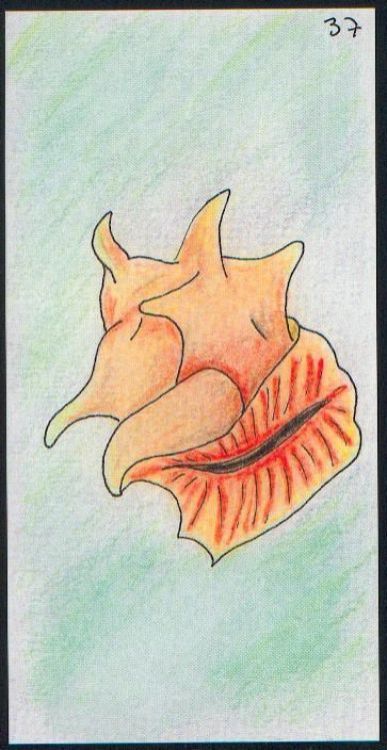Concerning the graphics of the cards, after the surprise of having illustrations made with a simple wooden pencil (we like or not), we notice that the symbolism used is rather simple and refined, which makes the game accessible to beginners. However, there is a balance to be found between a graphic design loaded with symbolism or with ambiguous or diverted symbols and a graphic design with a single symbol without any additional details to enrich or nuance the meaning of the card. I am not sure that the author has achieved this balance in his deck.
The most unfortunate thing in this edition is the book that is not well written. The explanations on the cards may be clear, but the book as a whole, as well as the game, is not designed to facilitate learning. The cards have a name on them but it is not on the cards, no keywords are given per card. Too few card associations are explained. The most disappointing part is undoubtedly the spreads, which are too synthetic, assigning no role to the locations (which would make the spread accessible to novices) and providing no examples.
The Ge oracle seems designed primarily for clairvoyance and predictive use and not for psychological spreads even if it is possible to do so. Despite the modernity of the game (created in the early 90's) I am not sure that it adds any real added value compared to much older games like Lenormand, even if it is true that its images are clearer than the Belline system. I hear that this game was first and foremost a creation of the author for his personal use, before it was published. Also the creator's approach having been to create a very personal tool, everyone will make his own opinion on the interest he will have to use this oracle.
In summary, I do not recommend this edition for beginners because of the book which seems to be the result of a careless work. Experienced practitioners may find better alternatives in other modern games such as the Oracle of the Triad.























